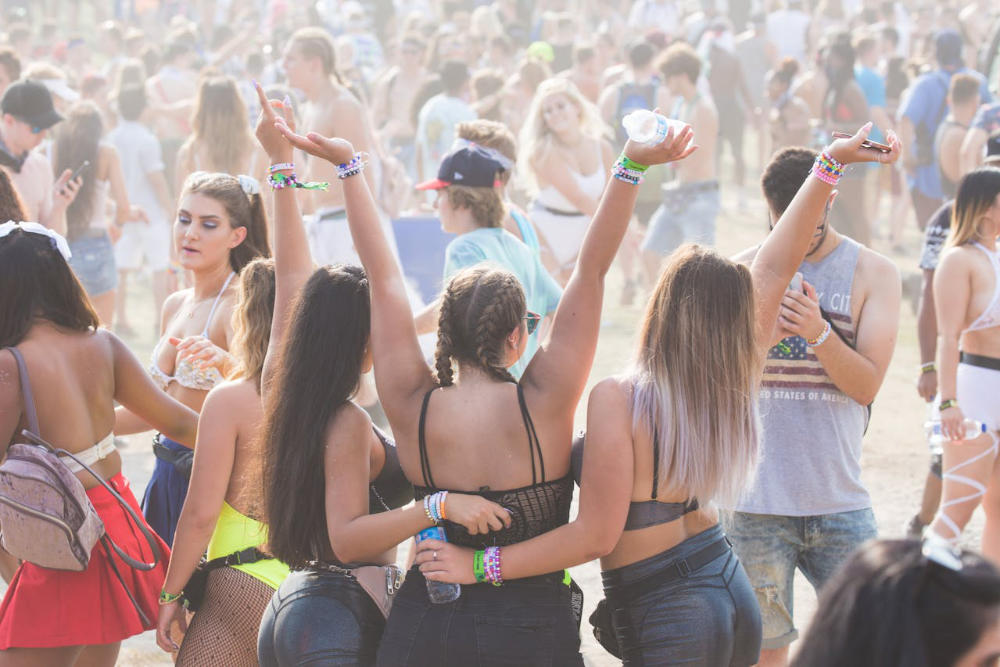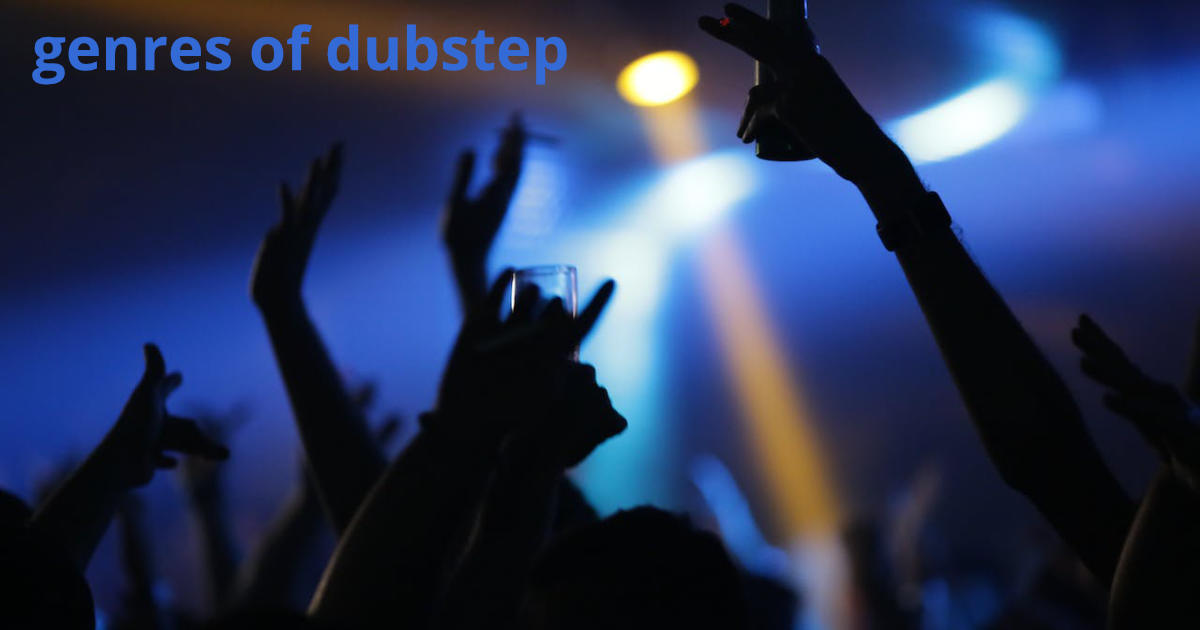Estimated reading time: 8 minutes
Dubstep is a genre of electronic dance music that originated in the late 1990s in the United Kingdom. It is characterized by its heavy basslines, syncopated rhythms, and robotic sounds. Dubstep has evolved over the years, giving rise to various subgenres that cater to different tastes and preferences. This comprehensive guide will take you on a journey through the origins of dubstep, its evolution, and the diverse genres that have emerged within the dubstep sound.
Table of contents
The Origins of Dubstep
Dubstep can trace its roots back to the vibrant music scene of South London in the late 1990s and early 2000s. It emerged as a fusion of various styles of music, including 2-step garage, drum and bass, and dub reggae. DJs and producers in this scene experimented with the manipulation of basslines and beats per minute, giving birth to a new style of music that would soon captivate audiences worldwide.
Evolution of Dubstep: From 2-Step Garage to Dubstep
The evolution of dubstep can be traced through its journey from 2-step garage to the distinct dubstep sound we know today. In the early 2000s, artists such as El-B, Zed Bias, and Horsepower Productions were at the forefront of this movement, pushing the boundaries of what was considered traditional garage music. They incorporated elements of dub reggae and experimented with dark, heavy basslines, creating a unique sound that would set the stage for the genre’s future evolution.
Classic Dubstep: Exploring the Elements and Characteristics
Classic dubstep is characterized by its deep, rumbling basslines, sparse beats, and dark, atmospheric soundscapes. Artists like Skream, Benga, and Digital Mystikz played a pivotal role in shaping this genre, with tracks such as “Midnight Request Line” and “Night” becoming iconic within the dubstep community. Classic dubstep is often associated with underground clubs and intimate gatherings, where the music’s raw energy can be fully appreciated.
Melodic Dubstep: A Subgenre with a Focus on Melodies
Melodic dubstep, also known as “chillstep,” is a subgenre that places a greater emphasis on melodies and harmonies. Artists such as Seven Lions, Illenium, and Au5 have embraced this style, creating tracks that combine ethereal vocals, lush soundscapes, and heavy basslines. Melodic dubstep offers a more uplifting and melodic take on the genre, often incorporating elements of pop and progressive house.
- What is Dubstep and Why is it So Popular? Discover the Dynamic World of Dubstep
Drum & Bass
While dubstep has its own distinct sound, it is closely related to drum and bass, another popular genre within electronic music. Drum and bass, often abbreviated as D&B, is characterized by its fast beats per minute (BPM), intricate drum patterns, and bass-heavy sound. Dubstep and drum and bass share a common heritage, with artists and fans crossing over between the two genres. Many dubstep producers have experimented with drum and bass elements in their tracks, leading to a fusion of styles that pushes the boundaries of both genres.
Brostep: The Aggressive Sound of Dubstep
Brostep is a subgenre of dubstep that emerged in the late 2000s and gained mainstream popularity in the early 2010s. It is characterized by its aggressive, high-energy sound, incorporating heavy bass drops, distorted synths, and intense build-ups. Artists such as Skrillex, Excision, and Datsik played a significant role in popularizing brostep, with tracks like “Scary Monsters and Nice Sprites” becoming anthems of the genre. Brostep often appeals to a younger audience and is frequently associated with energetic live performances and music festivals.
- Brostep vs Dubstep: Unraveling the Battle of the Bass Drops
Future Garage: Blurring the Lines Between Dubstep and Garage
Future garage is a subgenre that blurs the lines between dubstep and garage music. It combines the deep basslines and atmospheric soundscapes of dubstep with the rhythmic patterns and soulful vocals of garage. Artists such as Burial, Mount Kimbie, and James Blake have embraced this style, creating music that evokes a sense of nostalgia and introspection. Future garage offers a more introspective and experimental take on dubstep, with its haunting melodies and intricate production techniques.
Exploring Dubstep Elements: Heavy Basslines and Robotic Sounds
One of the defining characteristics of dubstep is its heavy basslines. These basslines often take center stage, creating a powerful and immersive listening experience. Dubstep artists use various techniques to create these basslines, including the use of synthesizers, samplers, and effects processors. The result is a deep, rumbling sound that can be felt as much as it is heard.
In addition to the heavy basslines, dubstep is also known for its robotic sounds and futuristic soundscapes. Artists manipulate sound samples and use effects to create a unique sonic landscape that is both otherworldly and captivating. This combination of heavy basslines and robotic sounds is what gives dubstep its distinct and recognizable sound.

Dubstep Drum Patterns: Syncopated Rhythms and Hard-Hitting Beats
Dubstep drum patterns are often characterized by their syncopated rhythms and hard-hitting beats. Syncopation refers to the placement of accents or beats on weaker parts of the measure, creating a sense of offbeat or unexpected rhythm. This rhythmic complexity is one of the reasons why dubstep stands out within the electronic music genre.
Dubstep drum patterns typically feature sparse beats with heavy emphasis on the kick and snare drums. The beats are often programmed to create a sense of tension and release, with the kick drum providing a powerful punch and the snare drum adding an element of aggression. These hard-hitting beats are what give dubstep its energetic and dynamic sound.
- When was Dubstep Created? Tracing the Roots
Dubstep Vocal Samples and the Influence of Electronic Music
Acapella vocal samples play a significant role in dubstep, adding a human touch to the otherwise mechanical and robotic sound. Dubstep artists often sample vocals from various sources, including movies, interviews, and other songs, to create unique and memorable hooks. These vocal samples can range from haunting whispers to powerful screams, adding an emotional depth to the music.
Dubstep’s sound has been heavily influenced by other genres of electronic music, including techno, house, and drum and bass. Artists and producers have drawn inspiration from these genres, incorporating their elements and techniques into dubstep tracks. This cross-pollination of styles has contributed to the diversity and evolution of dubstep as a genre.
Dubstep and the Role of Record Labels and DJs
Record labels and DJs have played a crucial role in the growth and popularity of dubstep. Labels such as Hyperdub, Deep Medi Musik, and Tempa have been instrumental in promoting and releasing dubstep music, providing a platform for artists to showcase their work. These labels have helped shape the direction of dubstep, curating releases that reflect the evolving sound of the genre.
DJs have also been influential in spreading the dubstep sound. Artists like Skream, Benga, and Mala have gained recognition not only for their productions but also for their DJ sets. Through their performances, they have introduced audiences to new tracks and artists, contributing to the growth and expansion of dubstep as a global phenomenon.
Popular Dubstep Tracks and Artists
Dubstep has produced many popular tracks and artists that have left a lasting impact on the genre. From Skrillex’s “Scary Monsters and Nice Sprites” to Benga’s “Night”, these tracks have become anthems of the dubstep movement. Artists like Excision, Zeds Dead, and Flux Pavilion have also made significant contributions to the genre, pushing the boundaries of what is possible within the dubstep sound.
The Impact of John Peel and Mary Anne Hobbs on Dubstep
John Peel and Mary Anne Hobbs were influential figures in the dubstep scene, championing the genre and giving it exposure through their radio shows. John Peel, a renowned BBC Radio 1 DJ, was one of the first to play dubstep on national radio, introducing the genre to a wider audience. Mary Anne Hobbs, also a BBC Radio 1 DJ, hosted the influential show “Dubstep Warz,” which showcased the emerging dubstep sound and its diverse range of artists.
Conclusion: The Diversity and Future of Dubstep
Dubstep is a genre that has continually evolved and diversified since its inception. From its origins in South London to its global reach today, dubstep has expanded to include various subgenres and styles. Whether you prefer classic dubstep with its heavy basslines or the melodic and uplifting sound of melodic dubstep, there is something for everyone within the world of dubstep. As the genre continues to grow and evolve, it will be exciting to see what new sounds and innovations emerge.
FAQ
Dubstep is a genre of electronic dance music characterized by heavy basslines, syncopated rhythms, and robotic sounds.
Some popular dubstep tracks include Skrillex’s “Scary Monsters and Nice Sprites” and Benga’s “Night.”
Classic dubstep focuses on deep basslines and atmospheric soundscapes, while melodic dubstep places a greater emphasis on melodies and harmonies.
Brostep is a subgenre of dubstep that is characterized by its aggressive, high-energy sound.
John Peel and Mary Anne Hobbs were influential figures in the dubstep scene, helping to promote and popularize the genre through their radio shows.
